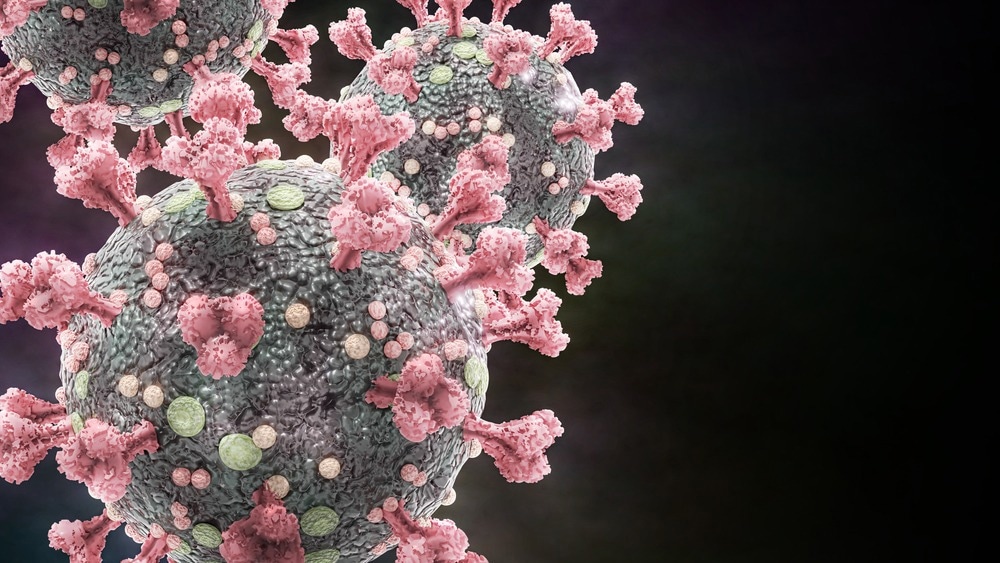In a recent study posted to the bioRxiv* preprint server, researchers investigated whether endothelial TLR3 (toll-like receptor 3) insufficiency contributes to lung vascular remodeling induced by severe acute respiratory syndrome coronavirus 2 (SARS-CoV-2).
 Study: A role for Toll-like receptor 3 in lung vascular remodeling associated with SARS-CoV-2 infection. Image Credit: Dotted Yeti/Shutterstock
Study: A role for Toll-like receptor 3 in lung vascular remodeling associated with SARS-CoV-2 infection. Image Credit: Dotted Yeti/Shutterstock

 *Important notice: bioRxiv publishes preliminary scientific reports that are not peer-reviewed and, therefore, should not be regarded as conclusive, guide clinical practice/health-related behavior, or treated as established information.
*Important notice: bioRxiv publishes preliminary scientific reports that are not peer-reviewed and, therefore, should not be regarded as conclusive, guide clinical practice/health-related behavior, or treated as established information.
Background
The coronavirus disease 2019 (COVID-19) pandemic has caused unprecedented morbidity and mortality across the globe. The continual emergence of SARS-CoV-2 variants with greater infectivity, transmissibility, and immune evasiveness has threatened the efficacy of COVID-19 vaccines and therapeutic agents such as monoclonal antibodies, warranting the development of more effective treatment options.
Studies have reported cardiac complications among patients with coronavirus disease 2019 (COVID-19) and post-acute COVID-19 or long COVID. Endothelial cell (EC) dysfunction and pulmonary vasculature remodeling, including thickening of the pulmonary arterial wall, pulmonary hypertension (PH), ventricular remodeling, and heterogeneous lung perfusion, have been reported among SARS-CoV-2-infected individuals.
TLR3 is a critical component of antiviral responses since it detects viral endosomal ribonucleic acid (RNA) and enhances type I IFN (interferon) expression. An improved understanding of the cardiovascular effects of COVID-19 and exploration of underlying mechanisms can aid in developing targeted and more effective therapies to reduce the health burden of COVID-19.
About the study
The present study investigated whether COVID-19 potentiates pulmonary microvascular and arterial remodeling with endothelial cell apoptosis through lowered toll-like receptor 3 expression.
PAECs (pulmonary artery endothelial cells) and HLMVECs (human lung microvascular endothelial cells) were obtained for cell culture experiments, following which SARS-CoV-2 RNA was isolated and subjected to real-time quantitative polymerase chain reaction (PCR) analysis. In addition, pulmonary samples from obtained from COVID-19 SARS-CoV-2-positive individuals’ explanted lungs.
β-actin, SARS-CoV-2 nucleocapsid (N) protein, toll-like receptor 3 antibodies, and SARS-CoV-2 strains such as USA-WA1/2020, and mice-adapted MA10, were used for serological assessments. Mesocricetus auratus (Syrian hamsters), wild-type (101045 strain) mice and TLR3-/- murine animals (005217 strain) were used for the animal experiments. The murine animals were challenged with SARS-CoV-2 intranasally, and a few of them were administered either intraperitoneal injections of 10.0 mg per kg Poly(I:C) thrice weekly, or mock (control) injections of phosphate-buffered saline (PBS).
Any changes in the murine body weight were assessed. After a week of treatment, mice underwent echocardiography analysis, following which murine blood was collected, and their cardiac and pulmonary tissues were harvested. Hamster tissues obtained were subjected to protein isolation and immunoblotting analyses. In addition, histological examination and immunohistochemistry (IHC) analysis were performed.
Results
In the pulmonary tissues of individuals and Syrian hamsters infected by SARS-CoV-2, the team observed thickening of pulmonary arterial media, microvascular rarefaction, and reduced microvascular density (MVD), consistent with alveolar tissue architectural disruption. SARS-CoV-2 infections induced pulmonary arterial and microvasculature remodeling, endothelial cell apoptosis, and increased arterial muscularization in lungs, and in situ among PAECs, with lowered TLR3 expression.
The team detected SARS-CoV-2 N, spike (S), and envelope (E) protein messenger RNA (mRNA) six hours post-infection. COVID-19 increased the cross-sectional area (CSA) among RV (right ventricular) cardiomyocytes in the infected hamsters. Post-SARS-CoV-2 MA10 infection, toll-like receptor 3 knockout murine animals showed increased remodeling in the pulmonary arteries and apoptosis in the endothelial cells.
Injections of polyinosinic:polycytidylic acid [poly(I:C)], an agonist of toll-like receptor 3, prevented the loss of microvascular density and decreased tissue injury, blood vessel remodeling, inflammation, and endothelial cell apoptosis in the pulmonary tissues of SARS-CoV-2 MA10-infected animals. Furthermore, lowered PAT (pulmonary arterial acceleration time) versus PET (pulmonary ejection time), and increased PAP (pulmonary arterial pressure) were noted among SARS-CoV-2 MA10- infected TLR3+/+ murine animals, which were prevented by Poly(I:C) therapy.
Moreover, left ventricular (LV) ejection fraction (EF) was lowered among TLR3-/- mice post-COVID-19, but not among TLR3+/+ SARS-CoV-2-infected mice, indicative of the cardiovascular protection conferred by toll-like receptor 3 during SARS-CoV-2 infections. Poly(I:C) elevated the levels of chemokines and cytokines such as interleukin-6, interleukin-1b, interleukin-10, tumor necrosis factor-alpha (TNF-α), and C-X-C motif ligand 10 (CXCL-10). The findings indicated that Poly(I:C) induced protective immunological responses. TLR-/- murine animals showed lower expression of the cytokines following SARS-CoV-2 MA10 infections.
Conclusion
Overall, the study findings showed that SARS-CoV-2 infection induces pulmonary microvascular and macrovascular remodeling and endothelial cell apoptosis with lowered toll-like receptor 3 expression. Therefore, the enhancement of TLR3 levels could be considered a probable therapeutic strategy against SARS-CoV-2. The findings indicated that toll-like receptor 3 agonists protect the heart and the lung post-COVID-19, and therefore, TLR-3 agonists could widen the therapeutic landscape of COVID-19.

 *Important notice: bioRxiv publishes preliminary scientific reports that are not peer-reviewed and, therefore, should not be regarded as conclusive, guide clinical practice/health-related behavior, or treated as established information.
*Important notice: bioRxiv publishes preliminary scientific reports that are not peer-reviewed and, therefore, should not be regarded as conclusive, guide clinical practice/health-related behavior, or treated as established information.